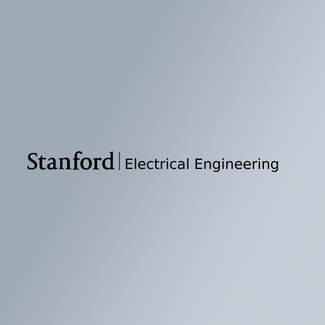
Stanford Energy Student Lectures
Mohammad Aljubran: Techno-economics of enhanced geothermal systems across the contiguous United States
Y2E2 299
Stanford grad students, postdocs, and faculty interested in energy:
Join us as grad student/postdoc speakers from various technical areas give short and accessible presentations about their innovative clean energy research. Learn about cutting-edge science and the most recent breakthroughs in areas such as renewables, energy conversion materials and devices, catalysis, and decarbonization from the researchers themselves!
SPEAKER: Eder Lomeli
Talk title: Unraveling the Redox Activity of Oxygen in Li-ion Battery Cathodes
Abstract: As demand for better performance in energy storage increases, a clear understanding of the charge compensating mechanism in Li-ion battery cathodes is essential for developing next generation battery chemistries and materials. X-ray core level spectroscopies allow for experimental measurement of the electronic structure of battery materials before and after charge, providing the clearest physical picture of electrochemical device operation. While experimental interpretation of these measurements currently drives research and development efforts in the field, a consistent theoretical framework is needed to paint a clearer picture of the electron density change and redox mechanism in these devices. In this talk, I will present numerical modeling of spectroscopic measurements of various battery chemistries in situ. I will reframe the common concept of transition metal redox, highlight the essential role of oxygen in both reversible and irreversible processes, and the break down in the standard paradigm of cationic/anionic redox. By the end of my talk, I should have motivated that stabilizing oxygen oxidation, often thought of undesirable in a cathode, is key for enabling commercial next generation Li-ion battery cathodes.
Bio: Eder Lomeli is a 4th year PhD student in the Materials Science and Engineering department, working with Professor Thomas P. Devereaux at the Stanford Institute for Materials and Energy Science at SLAC National Laboratory. His previous work focused on synthetic methods for battery materials, from positive electrodes with unconventional microstructures to organic coatings for reversible lithium plating. His current research focuses on studying energy materials, mainly batteries and superconductors, at the atomic scale via computational and theoretical methods to elucidate their electronic and structural properties. He completed his B.S. and M.S. in Materials Science and Engineering also at Stanford.
-----------
SPEAKER: Mohammad Aljubran
Talk title: Techno-economics of Enhanced Geothermal Systems Across the Contiguous United States
Abstract: Conventional geothermal systems are geographically limited because they require the natural co-occurrence of high temperatures, in-situ fluid for heat transport, and permeable or fractured rock for fluid flow. Recent technological advancements and field implementations have successfully demonstrated Enhanced Geothermal Systems (EGS), where heat transport and fluid flow are supplemented artificially by water injection and rock stimulation. EGS are applicable across diverse geographies, as naturally and sufficiently elevated subsurface temperatures are always present at certain depths. We conducted a comprehensive techno-economic analysis to evaluate EGS potential across the contiguous United States. Our approach involved developing a nationwide temperature-at-depth model for depths of 0-7 km with a spatial resolution of 18 km². We integrated accurate techno-economic data and models, including geothermal resource characteristics, capital and operational costs, weather patterns, and proximity to transmission lines, among other factors. The majority of EGS supply potential was found in the Western and Southwestern regions of the United States, with Texas, California, Oregon, and Nevada showing the greatest EGS capacity potential. We identified various EGS targets with a competitive levelized cost of electricity of less than $50/MWh.
Bio: Mohammad is a third-year PhD candidate in the Department of Energy Science & Engineering, supervised by Professor Roland Horne. His research focuses on modeling and optimizing the techno-economics of flexible geothermal power and energy storage. He received his MSc in Energy Resources Engineering from Stanford University in 2020 and has four years of professional experience in energy research and analytics. Mohammad has published over 40 articles and holds five granted patents. He has received multiple awards, including the 2024 Stanford University Henry J. Ramey Fellowship for outstanding research, the 2022 Geothermal Rising Marcelo Lippmann Graduate Scholarship Award for impactful geothermal energy research, and the 2019 Stanford University Frank G. Miller Fellowship for high academic achievement.